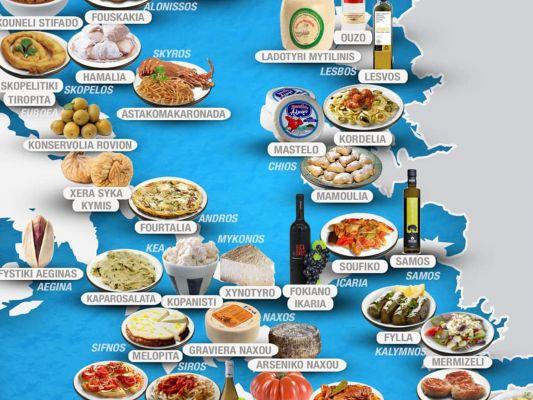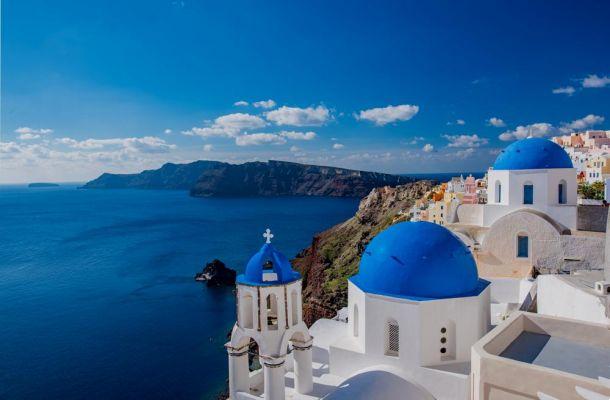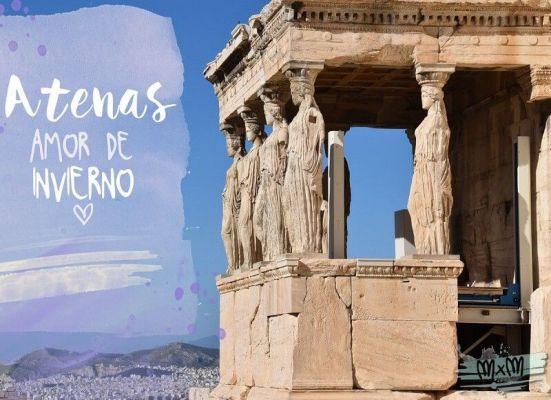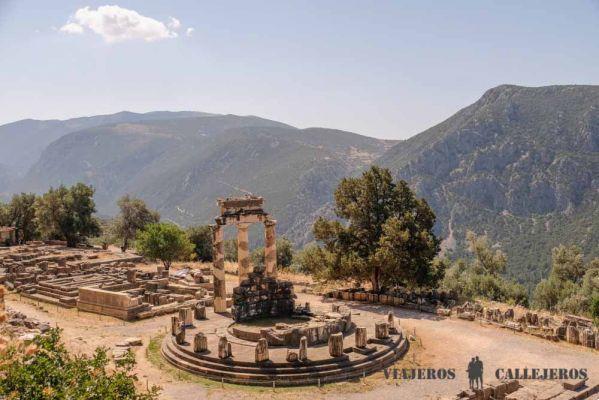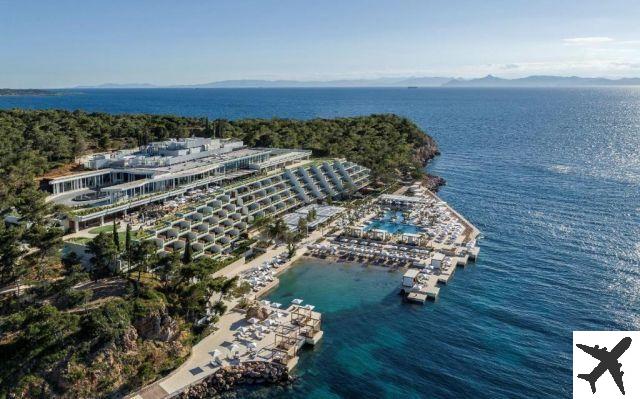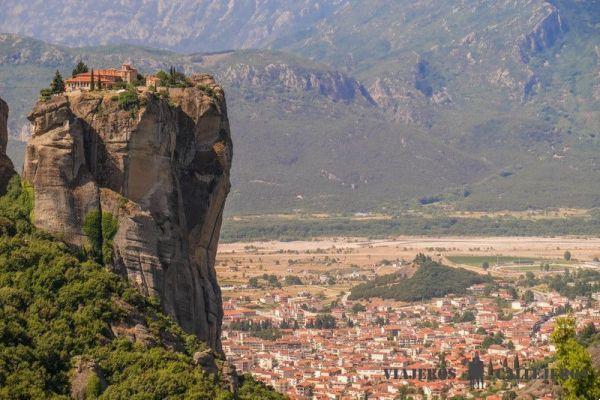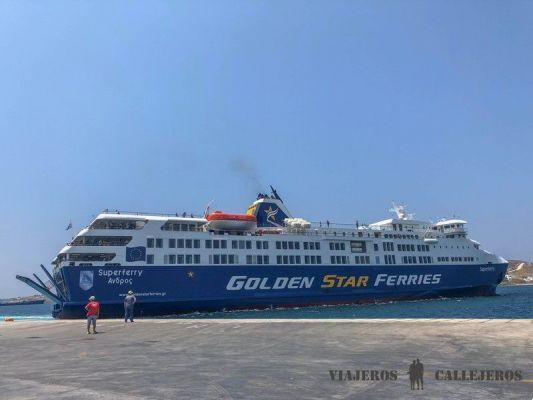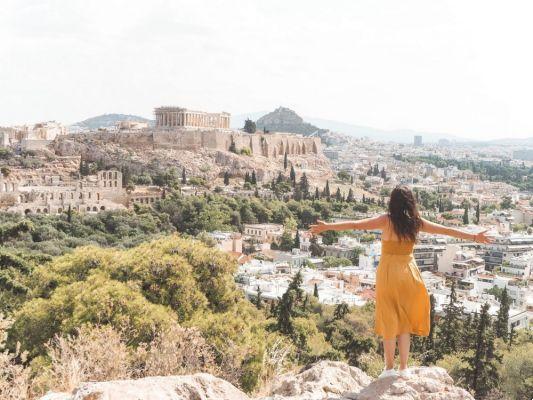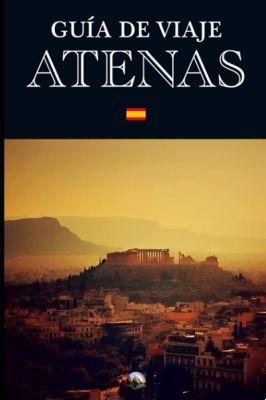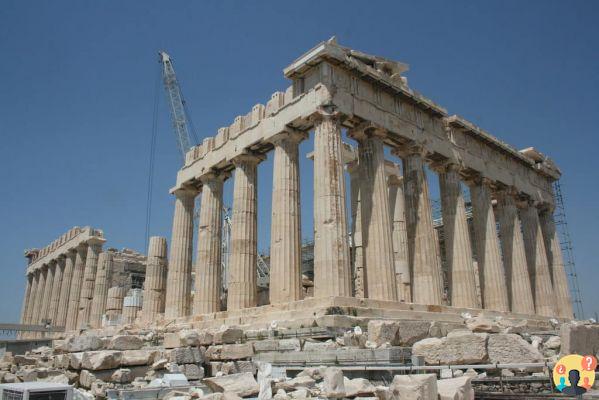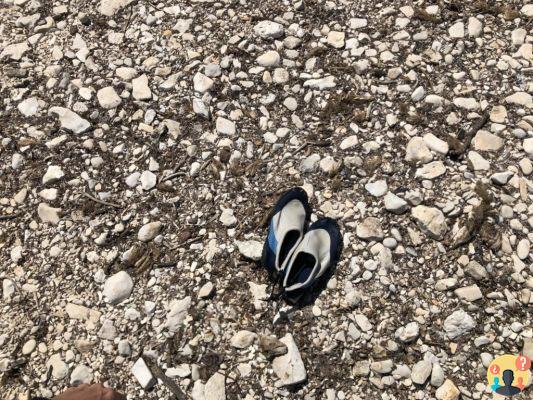
Summary
- 1. Visit Chora
- 2. The tourist market in Tinos
- 3. The museums of Tinos
- 4. The Basilica Evaggelistria Panagia
- 5. The villages of Tinos
- 6. Mount Exombourgo
- 7. Hiking on Tinos
- 8. The beautiful beaches of Tinos
- 9. Tinos Caves
- 10. The Archaeological Museum of Tinos
- How to get to Tinos?
- - From France
- - From Athens
- Where to stay in Tinos?
Are you going to Greece this summer? Discover the Cyclades and the Greek islands: here is our selection of 10 things to do to visit Tinos!
Located in the middle of the Aegean Sea, Tinos is a Greek island, between Andros and Mykonos. Tinos is the third largest island of the Cyclades archipelago and yet, it is often ignored by foreign tourists who go to Santorini or Mykonos instead. This is due to the absence of ancient monuments, the jagged coastline with no heavenly beaches and its exposure to the meltem winds in summer, earning it the nickname "home of Aeolus" in Greek mythology.
It is therefore a significant advantage for travellers who love authenticity and picturesque destinations: Tinos will not be "polluted" by mass tourism. With 8,636 inhabitants (2011) spread over 197 km², the small island of Tinos nevertheless has many attractions to offer.
Are you preparing a program and looking for what to do in Tinos? We have compiled a list of things to do when you come to visit Tinos.
Also read :
Visit the Cyclades: the 9 islands to do absolutely!
How to get around by ferry in the Cyclades?
1. Visit Chora
A port city since Greek Antiquity, Chora - or "Tinos city" - is the capital of Tinos. The Chora as we know it today dates back to the first half of the 18th century. It is at the port of Tinos that you will arrive by ferry from Andros, Siros or Mykonos . Once disembarked, explore the narrow streets and their terraces, admire the white facades of traditional houses and the maze of cobbled streets in the small town centre. Visit the Cultural Institution of Tinos, the "Cape Pasakrotiri" - a rock overlooking the sea and the island - and the church of the Virgin Mary. It is interesting to walk through the old streets leading to the church, lined with small shops where you can glean your souvenirs.
The visitor is invited to wander through the old quarters of Pallada and St. Eleftherios, smelling the scent of jasmine in the windows. In the old street of shops, don't miss the weaving workshop, where you can observe Tiniot women making traditional embroidery by hand. Behind the temple of the Virgin Mary, the old ramparts stand out, where history lovers can take a stroll. As a bonus in the city, there are many restaurants and bars to go out, cafés and pastries.
2. The tourist market in Tinos
In the old street of Tinos city, there is a ritual that would almost make us relive the Ottoman era or the Great Bazaar of Istanbul: the tourist market. The market is the meeting place of the shopkeepers who provide passers-by with all sorts of products, displayed on the ground.
You can find everything: icons, local embroidery, jewellery, pastries and traditional handicraft sweets. All this under a scent of incense that becomes more and more persistent as you get closer to the church of the Virgin Mary.
3. The museums of Tinos
In addition to the Archaeological Museum of Tinos, some cultural visits are not to be missed. You don't know what to do in Tinos? The wind prevents you from swimming? Here are some interesting museums to visit:
- The museum of the artists of Tinos
- The exhibition of ecclesiastical heritage objects and icons
- The sacristy of the temple of the Virgin Mary
- "Elijah's" mausoleum.
- The marble sculpture art museum
- The Museum of Antonios Sohos
- The Kostas Tsoklis Museum
- The museum of artists from Panormos
- The house-museum of Giannoulis Chalepas
- The museum of artists from Ysternia
At the Tiniotes Artists' Museum - located in the temple of the Virgin Mary - there are many works created by the island's native artists, including their paintings and sculptures. The museum of Antonios Sohos, a native of the island, exhibits the woods and plasters carved by the artist. Finally, if you come to visit Tinos, the Museum of Marble Sculpture Art, founded in 2007, is unique in Greece: it exhibits the life cycle of marble, from the quarry to his work in the workshop.
4. The Basilica Evaggelistria Panagia
Built in 1823 after a nun - whether one believes it or not - had a vision of an icon the Virgin Mary, the Evaggelistria Panagia Basilica is the emblematic monument of the city of Chora. It is situated on a hill and can be reached by stairs after a short walk. It has become a high place of pilgrimage to Tinos because of some women who, in the past, were unable to have children.
The pilgrimage was born when these women began to promise to give the Virgin Mary the name of the child they would bear if they became pregnant. Many people today are therefore called "Maria", "Despina" and "Panagiota" as a result of this legend. Inside the basilica you will see the icon of theAnnunciation, then the building itself, its nave and dome, the chapel and the confessionals. Built in immaculate white marble, the basilica also symbolizes the independence of Greece.
5. The villages of Tinos
The villages of the island, typical and picturesque, are unmistakable if you come to visit Tinos by road. Do not hesitate to make a stop in some of them:
- Volax
In Volax, discover a unique village where the white houses - attached to the granite blocks - offer a singular contrast with the dozens of flower gardens perched on balconies, roofs and windows.
- Kardiani
The village of Kardiani is built on a hillside and can only be visited on foot. It offers a unique panorama of the Mediterranean Sea and the islands of the Cyclades (Siros and Giaros).
- Panormos
Panormos is the small port of the village of Pyrgos. It was built in a bay near a lake and was for a long time considered the largest seaport in Tinos. Nearby you can swim in beautiful coves with little traffic.
Please note: The villages of Triantaros, Arnados and Mountados are also worth a visit.
6. Mount Exombourgo
Located in the centre of the island, Mount Exombourgo is a must if you like walking and outdoor activities. A hiking trail (easy) allows you to discover, in 2h30, the way built in the Venetian period and allowing you to reach the port and the city of Exombourgo. On your way, the walls built of huge stones of the ancient acropolis, the church of Kyra Xéni, the ruins of the ancient city and the fortress at the top, will be revealed to you.
7. Hiking on Tinos
In the south of the island, there are several options for hiking if you are out of inspiration to find out what to do in Tinos (or if the wind blows the beaches so much that you can't swim).
- In Falatados, a walk of about 2h30 will take you to the village of Livada. On the programme for the eyes: beautiful chapels, the remains of a water mill, stables and the Mediterranean vegetation of a stream.
- Another possibility: from Loutra, towards Smardakito or Kampos. This tour allows you to explore the valley that once made the agricultural prosperity of Tinos.
8. The beautiful beaches of Tinos
Visiting Tinos without mentioning the beaches would be a pity. It would be like visiting Istanbul without visiting the Basilica of Saint Sophia, Paris without Montmartre, Scotland without the pubs and the Highlands!
The most popular and/or beautiful beaches in Tinos are Agios Fokas, Kionia, Panormos, Kolimbithra, Agios Ioannis, Livada Bay, Stavros, Agios Markos, Agios Sostis. There are so many that we cannot list them all. But one thing is for sure: if you like deserted beaches with warm turquoise water, it's in Tinos, this little corner of paradise preserved from mass tourism, that it happens.
9. Tinos Caves
An island with preserved nature, Tinos is also endowed with caves dug by winds, agitated waves and erosion. Countless caves are unexplored. However, some of them can be visited, including the Gastria Cave, one kilometre west of Kionia, Myospilia (or Kameni Spilia), and 6 kilometres from the village of Aetofolia.
10. The Archaeological Museum of Tinos
In Chora, the archaeological museum is a must for anyone who comes to visit Tinos. Located on the central street leading to thechurch of the Virgin Mary, it was founded in the 1960s and displays collections of archaeological finds made on the island: storage jars discovered at the sanctuary of Demeter (in Xombourgo, dating from the 8th and 7th centuries BC), statues from the temple of Poseidon and Amphitrite of Kionia, the clock of Andronikos ofKyristos, a floormosaic, and antique coins.
How to get to Tinos?
From France
From France, set sail for Athens and search for the best flight deals available on the Skyscanner comparator.
From Athens
Once in Athens, head to the city's port - Piraeus - to take the ferry to Tinos.
There, we recommend you to rent a car to explore the island peacefully, at your own pace.
Note: You can also go to Tinos from Crete, Rhodes, the Dodecanese islands.
Book your ferry to Tinos from Athens
Where to stay in Tinos?
You have decided to discover the famous island of Tinos and you want to know where to stay? Several options are available to you and good news, Tinos is not the best known of the Cyclades, prices are relatively affordable. There are many hotels all over the island, so it won't be difficult to find the one that suits you best. For even more convenience, use a hotel comparator and choose from a panel of hotels according to your tastes and desires.
Would you prefer to stay in an apartment, a villa with your feet in the water or more typical accommodation in the region? Don't worry, go to a local accommodation platform such as Airbnb for example where you'll find the right accommodation for you.
We advise you to choose the neighbourhoods of Chora, Panormos or Volax. In Chora, the island's arrival point, it is easy to find accommodation. However, if you like peace and quiet, choose to stay there in the off-season. In the high season, prefer the pretty villages - a little far from the centre - such as Panormos or Volax.






